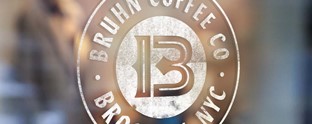How can your brand provide opportunity through adversity?

William Morgan-Harrold, creative and brand development director at Jones and Palmer, writes about the principles brands must achieve to not only survive but thrive through hardship.
Every organisation has to endure turbulence and disruption. This is one of the few guarantees you have as a business. We have also seen companies not only survive in these times of adversity, but thrive. A great example of this is Google, who defined and continuously developed its brand as the enterprise and stakeholders’ needs evolved. Seen originally as a search engine business, with growth came confusion. Moving beyond the internet to wider opportunities confused the answer to the fundamental question: ‘who does what?’ They became Alphabet, but kept Google as an operational division, focusing individuals with clear mandates for leadership at every stage of the business.
Why is an example like this important?
Few organisations build trust with their stakeholders, aligning these groups with a core belief system that guides them through the times of crisis, as well as the good times, is vital. How do they do this? Brand.
Your brand is your reputation. It aligns the beliefs of your business, and, if properly considered, the beliefs of your stakeholders. However, this will only take you so far. The people we trust the most are those who not only talk the talk, but walk the walk. Beliefs followed by actions create your reputation.
You’re probably thinking that it is as much about making the right decisions as it is about forging trust. True. A resilient corporate brand should guide decision making at all levels within your business.
In the same way we invest in maintaining relationships, our health and wellbeing, you must maintain your brand. Maintaining your corporate brand is to maintain your competitive advantage. A great example is Standard Chartered plc. They formed a brand, values and conduct committee with the purpose to oversee the brand, behaviours and reputation of the Group. Everything from brand positioning, sustainability, engagement between leadership and the workforce are continually measured, evaluated and reported on.
A change in your business does not mean changing your identity every single time. Your visual identity is nothing without meaning. Changing your identity should only be considered if a change to your business is significant or, most commonly, you did not create meaning behind your brand initially. You get out what you put in.
To provide clarity for your stakeholders, you need to answer these fundamental questions:
- What tangible difference do you make as a company and how do I fit into this?
- What is it you care about that I care about?
- Once we’ve achieved all these goals and objectives, what does the world look like?
By answering these questions you are already on the way to defining:
- Your purpose as an organisation.
- The mission (the big goal) that will contribute towards your purpose and vision in a meaningful way.
- The positive cause that will be outlined in your vision.
There are inevitably key triggers that will often lead to confusion rather than clarity. Recognising these triggers can be the difference between success and dilution.
A few examples are:
- Changes in leadership
- Acquisitions
- Disruption (technology and market related)
We all want to leave a legacy. However, today it can have a negative connotation. What if that legacy is a belief that leads to people continually innovating? Making decisions that will take the business forward? Well, then you have created a strong corporate brand!
Our hope is that this article will make you think about your corporate brand with focus. If you are not confident that you have achieved all the principles discussed above, then perhaps now is the time to do something about it.












